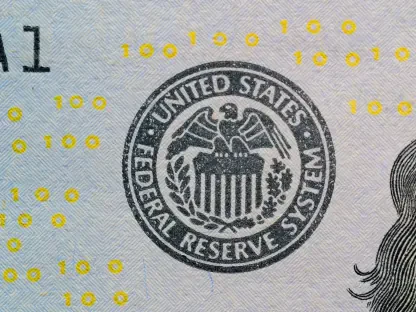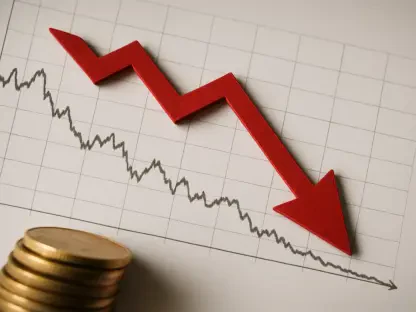As we navigate the year 2025, understanding the dynamics of personal loan rates plays a crucial role in financial planning for borrowers. Personal loans have become a key financial tool, providing funds for numerous purposes ranging from debt consolidation to home renovations. A significant factor influencing the affordability of these loans lies in the interest rates, which determine the overall cost of borrowing. Currently, the landscape of personal loan rates offers borrowers both challenges and opportunities, significantly influenced by credit scores, economic conditions, and lender policies. In 2025, personal loan interest rates are pivotal in shaping individuals’ financial decisions and strategies, particularly when considering long-term commitments.
Current Landscape of Personal Loan Interest Rates
In 2025, the average personal loan rate stands at approximately 20.78% APR, reflecting an increase from previous weeks. Personal loans serve diverse purposes, with debt consolidation remaining a popular use case. Top lenders specializing in debt consolidation, such as Happy Money and Reach Financial, have tailored products to cater to this demand. The allure of personal loans partly stems from their versatile application, whether for personal projects, unforeseen expenses, or significant life events like weddings and medical treatments.
Borrowers with exemplary credit receive the most competitive rates, typically in the single-digit range. This demographic benefits significantly as lenders perceive them as low-risk clients, thereby extending favorable loan terms. Conversely, those with poor credit face higher rates, reflecting the lenders’ efforts to mitigate risk. Among competitive offerings, institutions like Reach Financial, LightStream, and American Express offer some of the most enticing starting APRs. Notably, Reach Financial provides an entry point of 5.99%, showcasing the importance of maintaining an excellent credit score for financial advantages in the current market.
Influencing Factors on Interest Rates
Several critical factors shape personal loan interest rates in 2025, from macroeconomic influences to individual borrower characteristics. The Federal Reserve’s monetary policies, particularly the adjustments to the federal funds rate, profoundly affect the borrowing costs of banks and, consequently, the interest rates offered to consumers. Changes in the federal funds rate serve as a tool to either stimulate or restrain economic activity, directly impacting consumer borrowing costs.
Current economic conditions also play a crucial role in dictating loan rates. In periods of economic expansion, demand for loans typically surges as consumers and businesses seek to capitalize on growth opportunities. This increased demand can drive interest rates upward as lenders respond to the heightened need for credit. Conversely, during economic downturns or periods of uncertainty, borrowing demand often wanes, prompting lenders to lower rates to entice consumers and support economic recovery activities.
Credit Scores and Loan Terms
Credit scores stand as a pivotal determinant in the interest rates assigned to personal loans. A robust credit score is indicative of a borrower’s reliability and financial responsibility, leading lenders to offer reduced interest rates as a reflection of the lower risk involved. Typically, a credit score exceeding 700 is regarded as favorable for securing the lowest rates. Those with suboptimal credit withstand increased rates aimed at mitigating lender risk exposure.
The term of a loan further influences interest rates. Short-term loans tend to possess lower rates, given the minimized risk over a reduced repayment duration. The extended tenure of long-term loans, conversely, attracts higher rates due to the prolonged period over which lenders are exposed to potential default risks. Loan terms present a trade-off between the affordability of monthly payments and the total interest paid over time, crucial considerations for borrowers when selecting loan products.
Qualifying for Favorable Rates
Securing the most competitive personal loan rates involves a multidimensional approach focused on creditworthiness and financial stability. Applicants should aim to maintain a healthy credit score by adhering to on-time payment practices and managing existing debts effectively. Reducing the debt-to-income ratio is another strategic measure, displaying the capacity to manage existing financial obligations while incorporating new loan commitments.
Additionally, potential borrowers are advised to thoroughly canvass the lending market, comparing offerings from online lenders, credit unions, and traditional banks. Each lending institution comes with distinct rate structures, approval criteria, and borrower benefits. Online lenders are known for competitive rates due to reduced overheads, while credit unions, being nonprofit entities, may provide attractive options for their members. In contrast, traditional banks offer competitive terms frequently influenced by established customer relationships.
Navigating Fixed and Variable Rates
In 2025, borrowers face choices between fixed and variable interest rates for personal loans. Fixed-rate loans guarantee stability, offering consistent monthly payments throughout the loan term, simplifying budgeting and financial forecasting. On the contrary, variable-rate loans introduce fluctuations tied to benchmark rates such as the prime rate, introducing potential variability in repayment amounts.
The selection between fixed and variable rates hinges on borrower expectations of market trends and individual financial tolerance for uncertainty. Fixed rates are often preferred among risk-averse individuals or those seeking predictable financial planning over the loan lifespan. Variable rates may appeal to borrowers anticipating interest rate decreases but necessitate a keen awareness of evolving market conditions.
Alternative Lending Solutions
Beyond traditional personal loans, alternative lending options present themselves to borrowers in 2025, comprising balance transfer credit cards, home equity loans, and peer-to-peer lending platforms. Balance transfer credit cards typically offer introductory low or zero-percent rates, allowing debt to be consolidated and alleviated over initial periods. Following the promotional phase, rates escalate, necessitating strategic repayment planning.
Home equity loans and lines of credit (HELOCs) offer opportunities to leverage home ownership, usually providing lower interest rates due to their secured nature. While they promise attractive terms, the associated risk of home foreclosure in default scenarios underpins careful consideration. Peer-to-peer lending platforms facilitate connections between borrowers and individual investors, often delivering lower rates than traditional financial institutions, with the social element introducing diverse investor motivations.
Looking Ahead
As we find ourselves in the year 2025, deciphering the complexities of personal loan rates has become essential for effective financial planning for borrowers. Personal loans serve as a vital financial instrument for many, offering quick access to funds for various purposes such as debt consolidation, home improvements, and emergency expenses. However, a crucial aspect that affects the affordability of these loans is the interest rate. Interest rates essentially determine the total cost of borrowing over the life of the loan.
In the current economic climate, personal loan rates present both obstacles and opportunities for borrowers. These rates are heavily influenced by several factors including an individual’s credit score, prevailing economic conditions, and the specific policies of lenders. In 2025, interest rates on personal loans are particularly impactful in guiding people’s financial decisions, especially when evaluating long-term commitments like large purchases or refinancing existing debt.
Understanding how these interest rates work allows borrowers to strategically plan their finances, potentially saving substantial amounts of money over time. By paying attention to fluctuations in these rates and maintaining a good credit score, borrowers can make informed choices that align with their financial goals. Consequently, personal loan interest rates continue to play a pivotal role in shaping financial strategies in 2025, driving borrowers to be more vigilant and informed.









